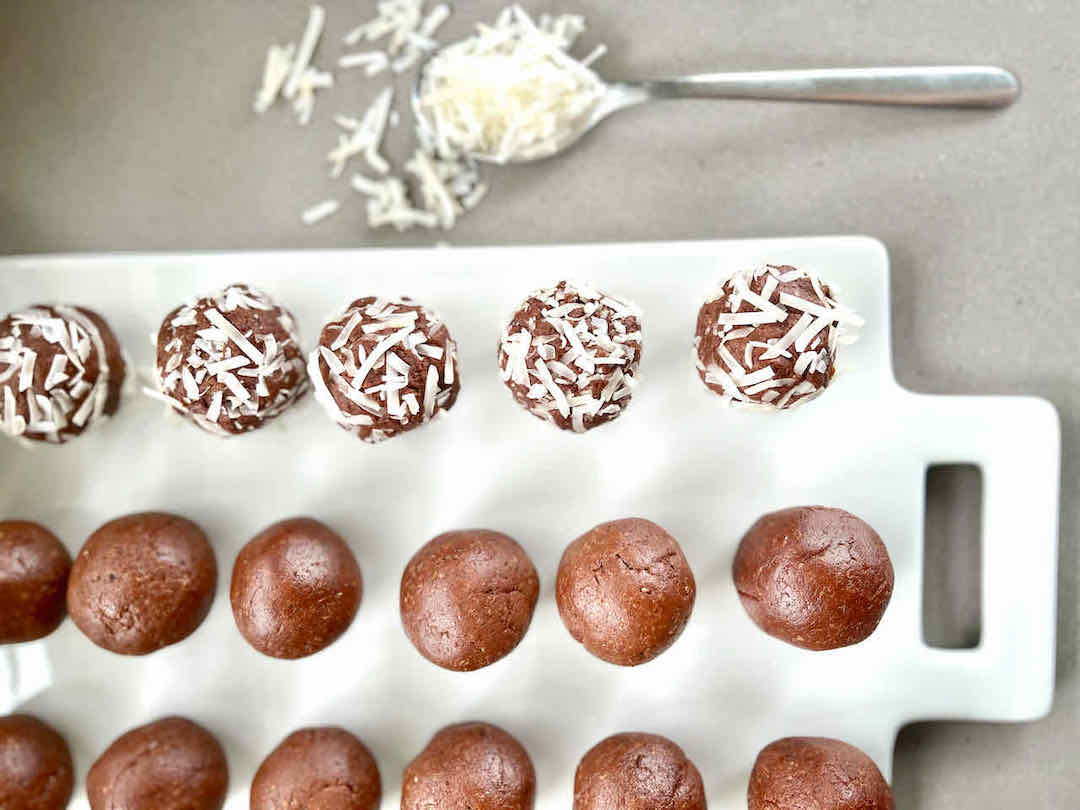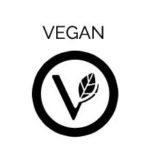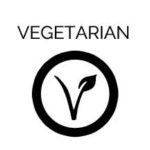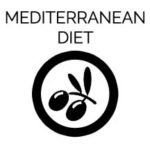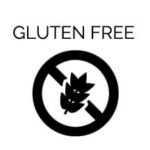Getting prebiotic fibres into the diet can be tough for kids and adults, especially for those that don’t enjoy eating a variety of fruits, vegetables, nuts, seeds and grains. So these prebiotic bliss balls are a great starting point for getting more prebiotic fibres into the diet. They taste great so kids will enjoy them and the natural sugars that come from the raisins are balanced with healthy fats, protein and fibre so your little ones won’t be tearing the house apart on a sugar high.
As a nut loving mum with nut loving kids, I find it challenging to steer clear of nuts in cooking and baking. But also knowing a couple of kids with nut allergies, I know the importance of sticking to the nut free lunchbox. So these prebiotic bliss balls contain no nuts making them lunchbox friendly. While they may lack nuts, the chia seeds, pumpkin seeds, oats, white beans, cacao and flaxseed oil all pack a nutritional punch providing decent amounts of prebiotic fibre, omega-3 fatty acids and magnesium.
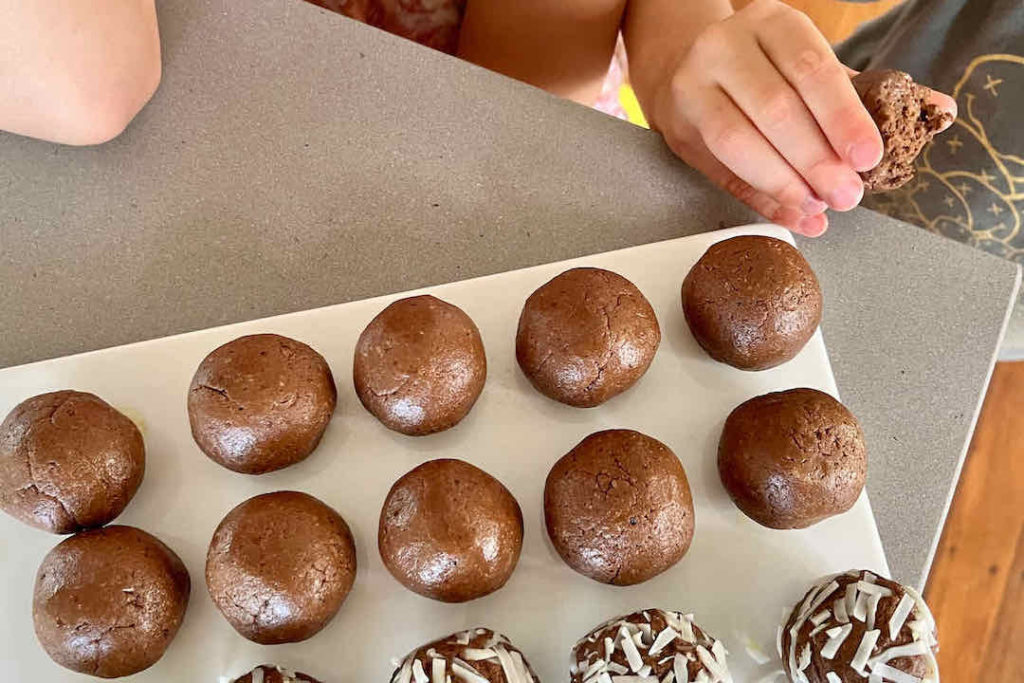
Dietary Suitability of Prebiotic Bliss Balls
Prebiotic Bliss Balls Food As Medicine
✓ Prebiotics
The white beans, chia seeds, oats and pumpkin seeds are all good sources of prebiotic fibre as they resist digestion in the upper digestive system and arrive to our lower intestine to be fermented by our beneficial gut microbes.
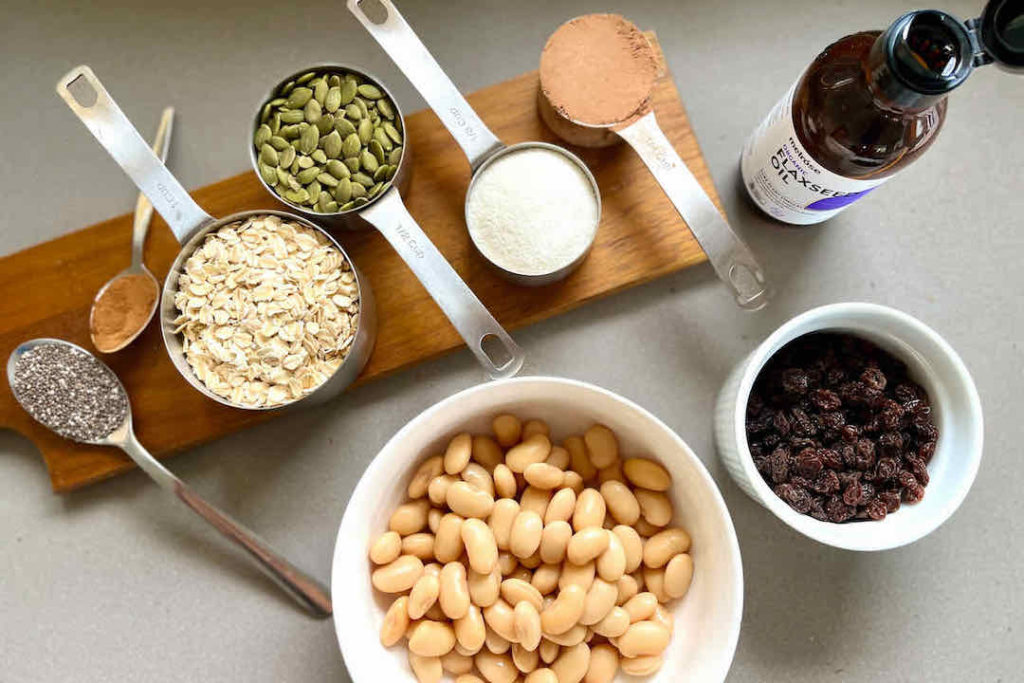

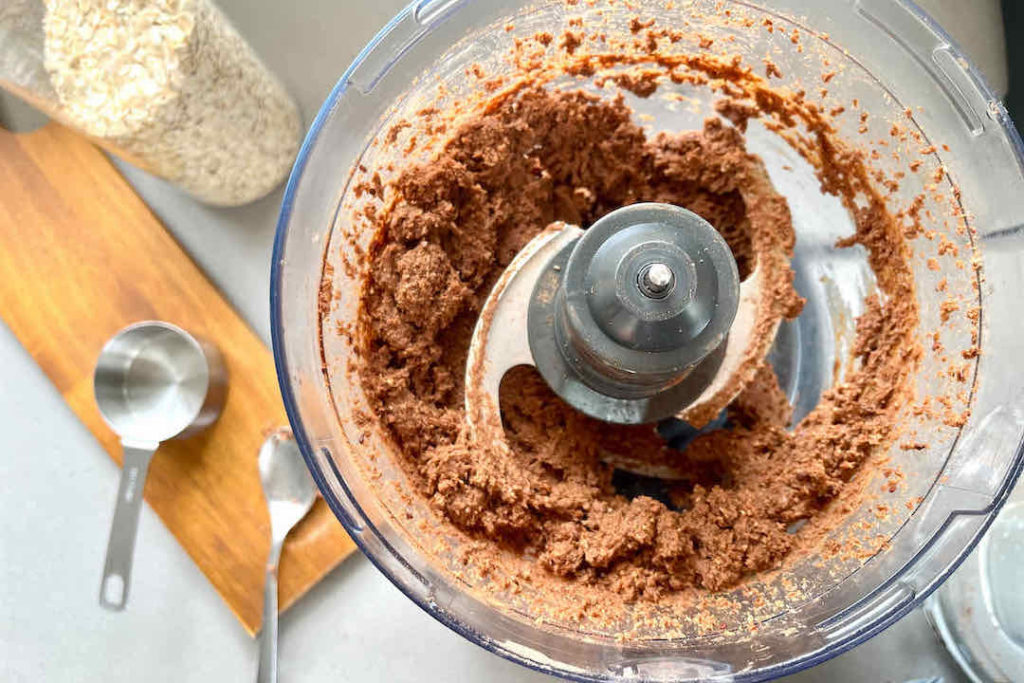
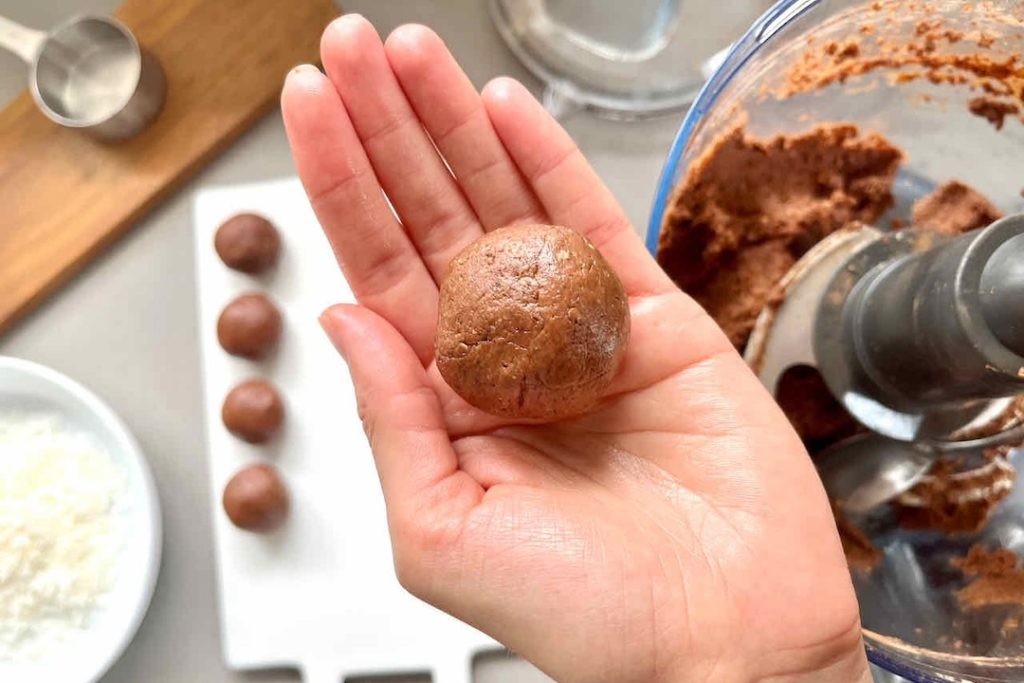


Prebiotic Bliss Balls
- Author: alanakrahe
- Total Time: 30 minutes
- Yield: 16 balls 1x
Description
These prebiotic bliss balls are a great starting point for getting more prebiotic fibres into the diet. They taste great so kids will enjoy them and the natural sugars that come from the raisins are balanced with healthy fats, protein and fibre so your little ones won’t be tearing the house apart on a sugar high.
Ingredients
- 1 cup raisins, soaked in warm water for about ten minutes
- 400g can of white beans, rinsed
- 1 cup of oats
- 1/2 cup of pumpkin seeds
- 1/4 cup cacao
- 1/4 cup chia seeds
- 1/3 cup flaxseed oil
- 1 tsp cinnamon
- 1/3 cup partially hydrolysed guar gum or prebiotic fibre (optional)
- 1/4 cup of shredded coconut (optional for rolling)
Instructions
- Soak the raisins in warm water for about ten minutes. Then discard the water and place the raisins into a food processor with the white beans, oats, pumpkin seeds, cacao, prebiotic fibre, chia seeds, flaxseed oil and cinnamon.
- Blitz the ingredients until combined. You want a thick paste consistency.
- Roll a desert spoon of mixture into balls and roll in coconut if you like.
- Place on a tray in the fridge for a few hours before eating.
Notes
- If you are looking for a more crunchy texture you can lightly toast the oats and add to the mixture at the end so the balls have some crunch to them.
- If you want a more chewy texture you can add half the raisins in the food processor and then mix the other half through the bliss ball paste just before rolling paste into balls.
- You can place these in the freezer instead of the fridge for a cold treat.
- Or if you are like me and love dark chocolate, these prebiotic bliss balls also taste great with some 85% or 90% Lindt dark chocolate broken up into small pieces and mixed through the mixture before rolling into balls. It’s for the polyphenols from the dark chocolate – promise. 😉
- Prep Time: 30 minutes

